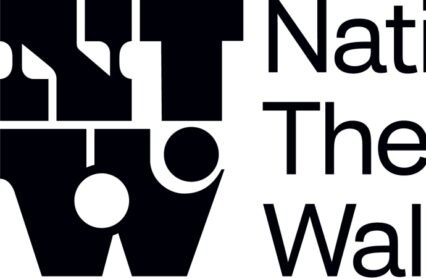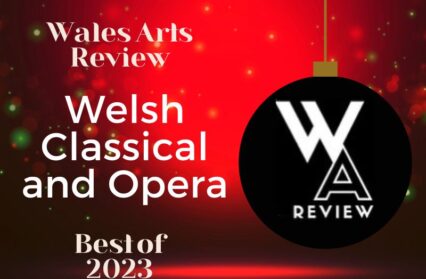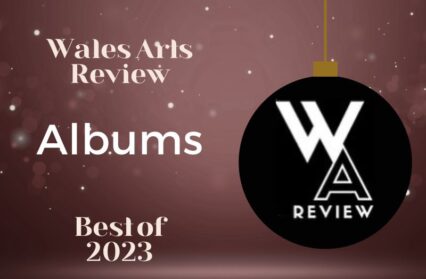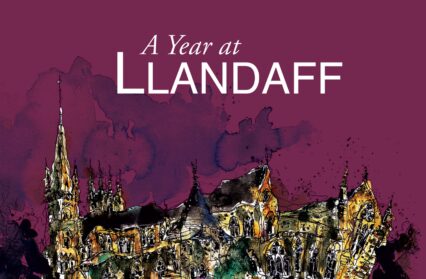Lichtbende: Seven Nights, a highlighted life
Orgelpark, Amsterdam, 27 January 2017
Rob Logister, projections
Marie Raemakers, projections
Gerrie Meijers, organ
Jacqueline Hamelink, cello
Björk Níelsdóttir, soprano
Jeannette van Steen, dramaturgy and choreography
At dusk on a cold winter’s day I took my seat in a former church containing five pipe organs. In front of me was a 20-metre wide screen in front of which were ranged twelve magic lanterns. On the screen a projection of a woman, reading. And to her right a real woman sitting, turning the pages of a book.
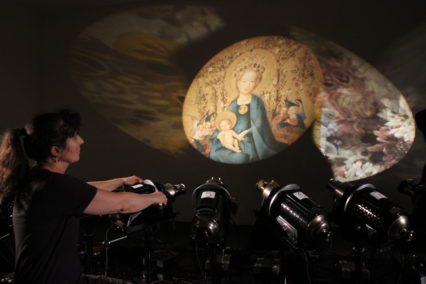
A previous encounter with the magic lantern at home in Wales had led me on a journey to the Netherlands, the home of the inventor of that projection device, Dutch scientist Christiaan Huygens, and to Amsterdam’s Orgelpark. Here, as the light of the January afternoon faded, projected images began to play on the screen, organist Gerrie Meijers eased open the swell box of the Orgelpark’s Sauer organ and soprano Björk Níelsdóttir stepped forward to sing the ascending and slowly blossoming phrases of Henryk Górecki’s O Domina Nostra, a paean of praise and gratitude to the Black Virgin of Jasnogora in the composer’s native Poland. This was the first of the Seven Nights of the performance’s title, this one subtitled desire, or more accurately longing, for the wordless narrative is about a new life growing within a woman. A foetus, drawn by Marie Raemakers, one of the pair of artists and makers-extraordinaire who are the Dutch visual arts, music and theatre company Lichtbende, turns and grows upon the screen until, as a full-grown baby, it is held in an outstretched woman’s hand, an image of fragility and tenderness.
Marie and her partner Rob Logister are constantly experimenting with mark-making for projection, and chose for Seven Nights to scratch through aluminium foil on glass plates to make outlines of the woman’s head and hand, and of the baby in a cradle. In conversation with Marie before the show, she spoke about the way she works, making many images but at the end of her exploration often returning to the very first, the sure impulse. The light projections produced are tools which enable each member of the audience to look afresh at the themes portrayed. Rob said that Lichtbende see the dance of light and sound in their shows as being like a ballet, work with a clear direction through it but open in its details to interpretation based on individual experience.
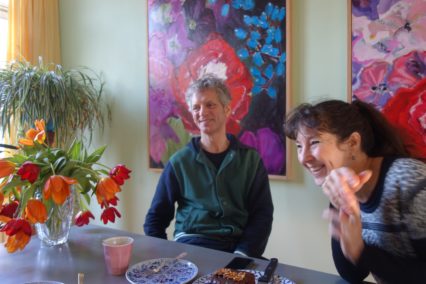
Following the success of their previous show Seven Days, to the organ music of Messiaen, Lichtbende conceived of Seven Nights as continuing where that left off, with the creation of the first human. Seven Nights is much darker in tone. The woman gives birth but the baby dies. This is signalled by a dramatic moment in the music for the second night, Sofia Gubaidulina’s In Croce for organ and cello. From the start of the piece, where the organ plays in its highest register and the cello in its lowest, the melodic lines shift until they cross in an explosion of dark energy, the music cataclysmic. In this night of loss, death is represented by a swirling projection of a dragon, flickering over the outline of the child in its bed. In a sublime image projected up onto the ceiling of the old church, the child becomes like a pattern of stars in the firmament and at the end of the night the cello descends from a sustained high note with the sound of an anguished cry.
Born in Russia in 1931, Gubaidulina, a practising Christian like Górecki (with whose work hers is often programmed) was blacklisted by the Soviet authorities, but found this a kind of liberation for her composition because, she said in an interview with The Guardian in 2010 “I could write what I wanted without compromise.” Central to her music and what she has wanted to express is sadness and pain.
As Marie and Rob told me in conversation, the music was their starting point, and they found the organ pieces of Gubaidulina and Górecki very visual. This music led them to this very particular representation of the cycle of life. Gubaidulina’s searing meditation on the cross is followed by the first three of her Preludes for solo cello in the night of melancholy, an intermezzo as images from the Renaissance masters, comforting representations of the Madonna and child, follow one after another, images flitting through the mind of the sorrowful mother. What, I wondered, looking at these pictures, lies behind the apparently calm expression on a person’s face, what agonies are they containing? In her Preludes Gubaidulina explores the extraordinary range of sounds and emotional impact that the cellist can produce from the instrument. Jacqueline Hamelink played here with skill, style and sensitivity.
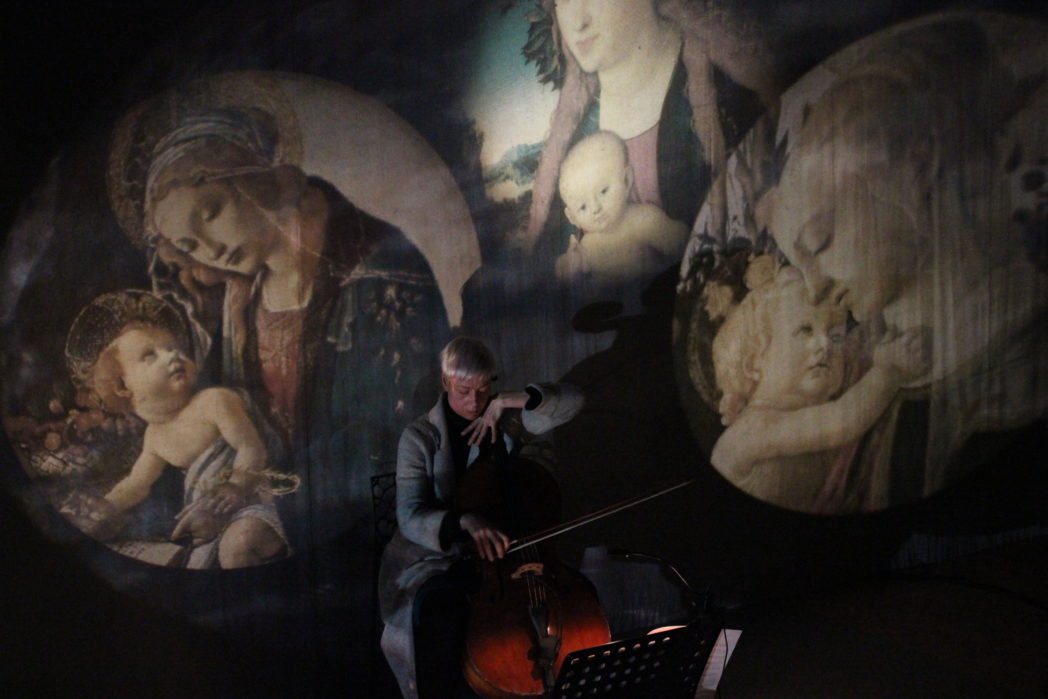
From the fourth night onwards the focus in this “highlighted life” was on further dimensions of loss, on the fugitive nature of memory in the ageing brain, when images mix, fade, recur and are, ultimately, out of our reach. The magic lantern projection is so well suited to this territory, with its possibilities of whirling, layering, merging and dissolving of images. The clown appears on screen, that totem of sad happiness. Gubaidulina’s Hell Und Dunkel (‘Light and Dark’) for organ is, in common with all the pieces in this performance, music which explores the extremes, aurally and emotionally.
Back to Gubaidulina’s Preludes in the fifth night, the night of shadows, where images come in and out of focus, while prelude number 4 uses spiccato bowing, like a knocking on the door of loss, and in the following two preludes we hear eerie, unnerving sounds, accompanied on the screen by a kind of smoke across the mind, behind which the image of the woman seated, reading, remains.
In the penultimate section, the night of battle, the intensity of Górecki’s note clusters in his Cantata for organ would be almost too much to bear without the images to distract the eye, though this is no easy entertainment, but rather a procession of deformity and horror, faces and shapes which the human brain, lost in dementia, may or may not be able to grasp.
And finally, a night of reconciliation as life comes full circle and soprano Björk Níelsdóttir returns for a reprise and continuation of Górecki’s O Domina Nostra, the universal woman praying to the Virgin for herself and her child, bathed in light elemental. There is, in that final section, a sense of peace and harmony restored after long struggle, Björk Níelsdóttir’s singing hugely expressive and comforting, soaring above the virile organ playing of Gerrie Meijers.
Cellist Jacqueline Hamelink also acts the part of the universal woman, in peace and in agony. The whole, conceptualised in the fertile imagination of Rob Logister and Marie Raemakers, has been eased into completion by the expert direction of dramaturg Jeannette van Steen.
Lichtbende’s Seven Nights is a work of huge integrity and stunning originality which deserves to be seen and heard far beyond Amsterdam’s Orgelpark.
Header photo of Björk Níelsdóttir, credit Lichtbende


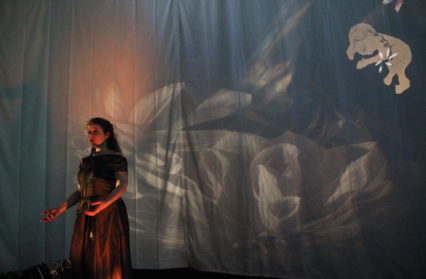
 Enjoyed this article? Support our writers directly by buying them a coffee and clicking this link.
Enjoyed this article? Support our writers directly by buying them a coffee and clicking this link.

